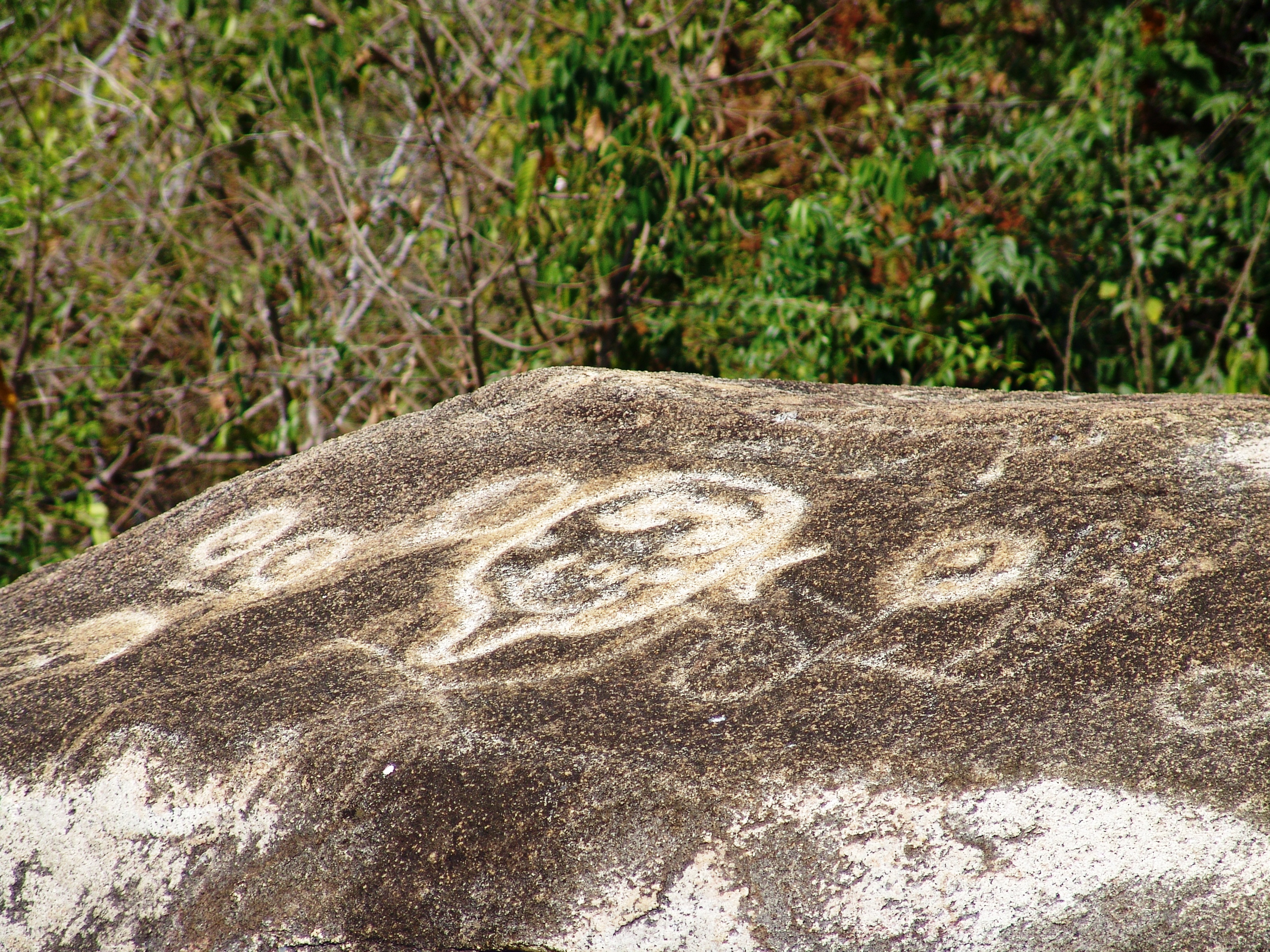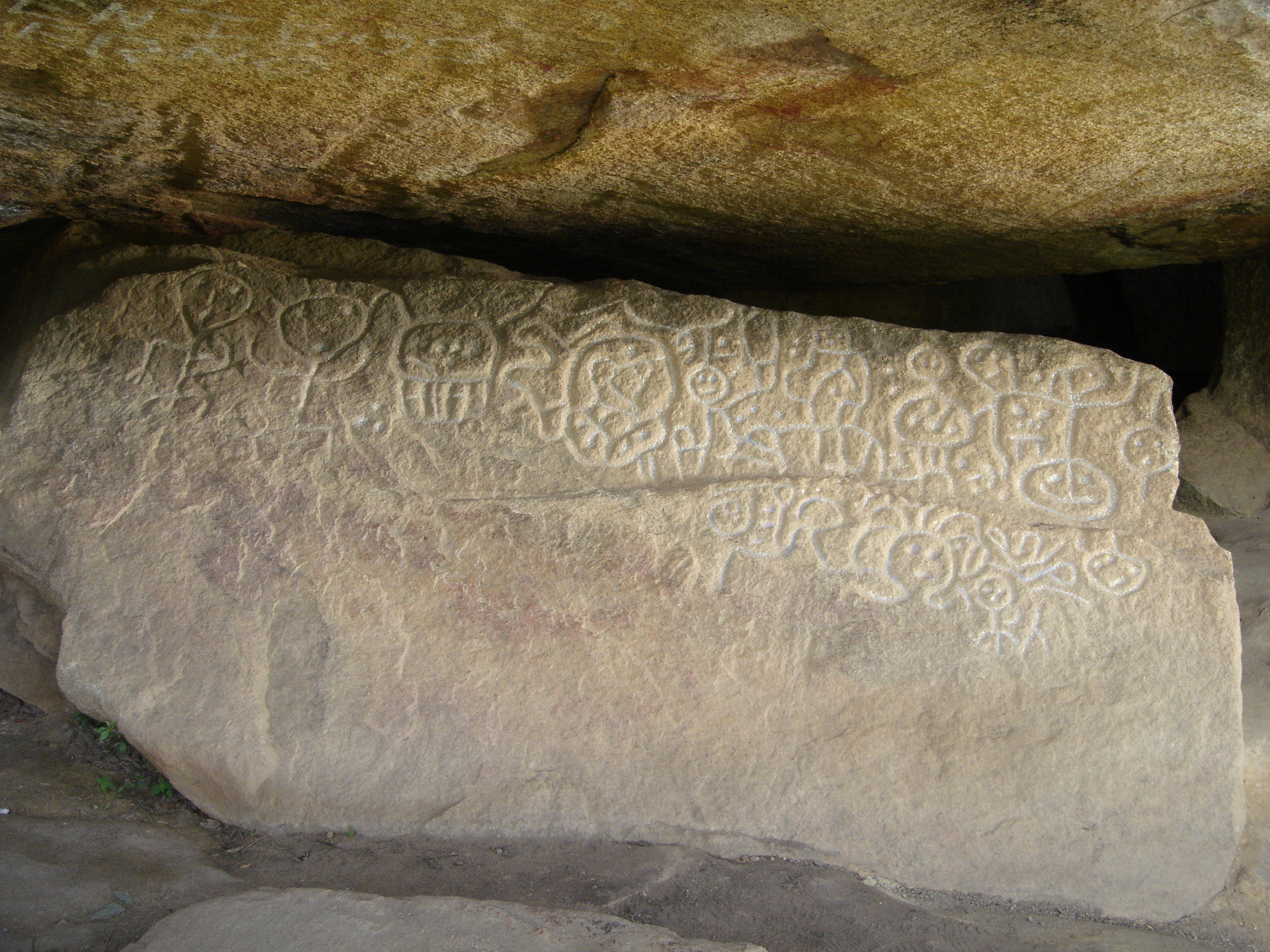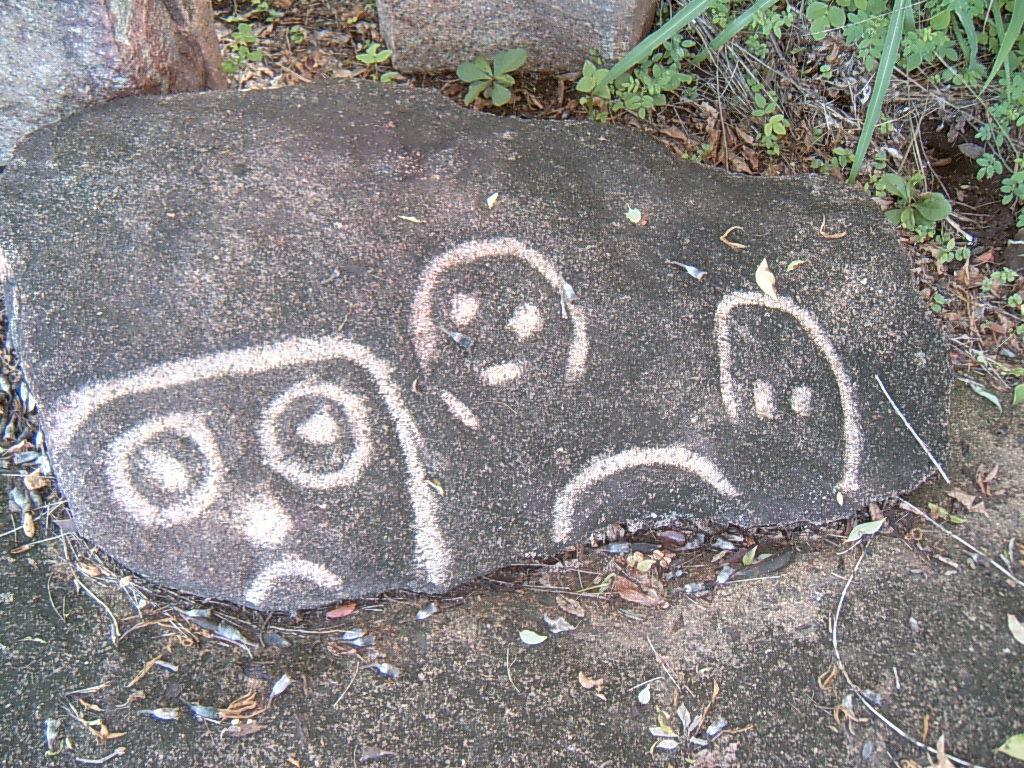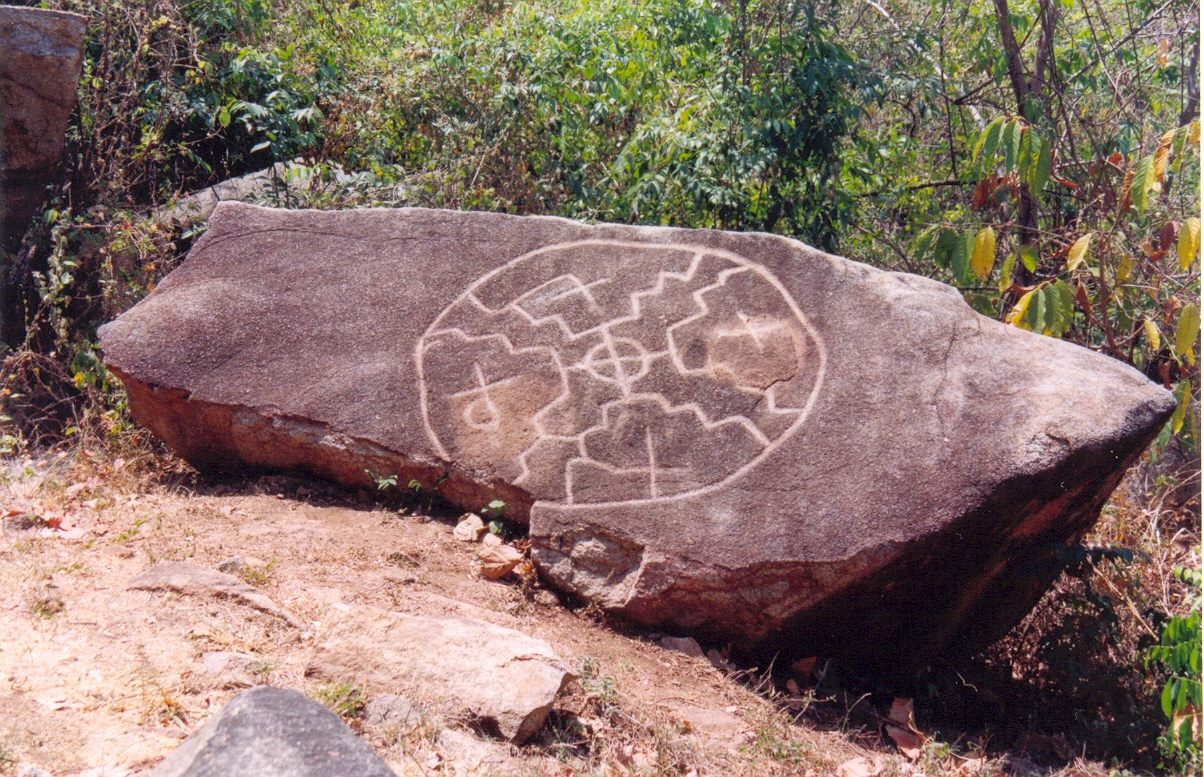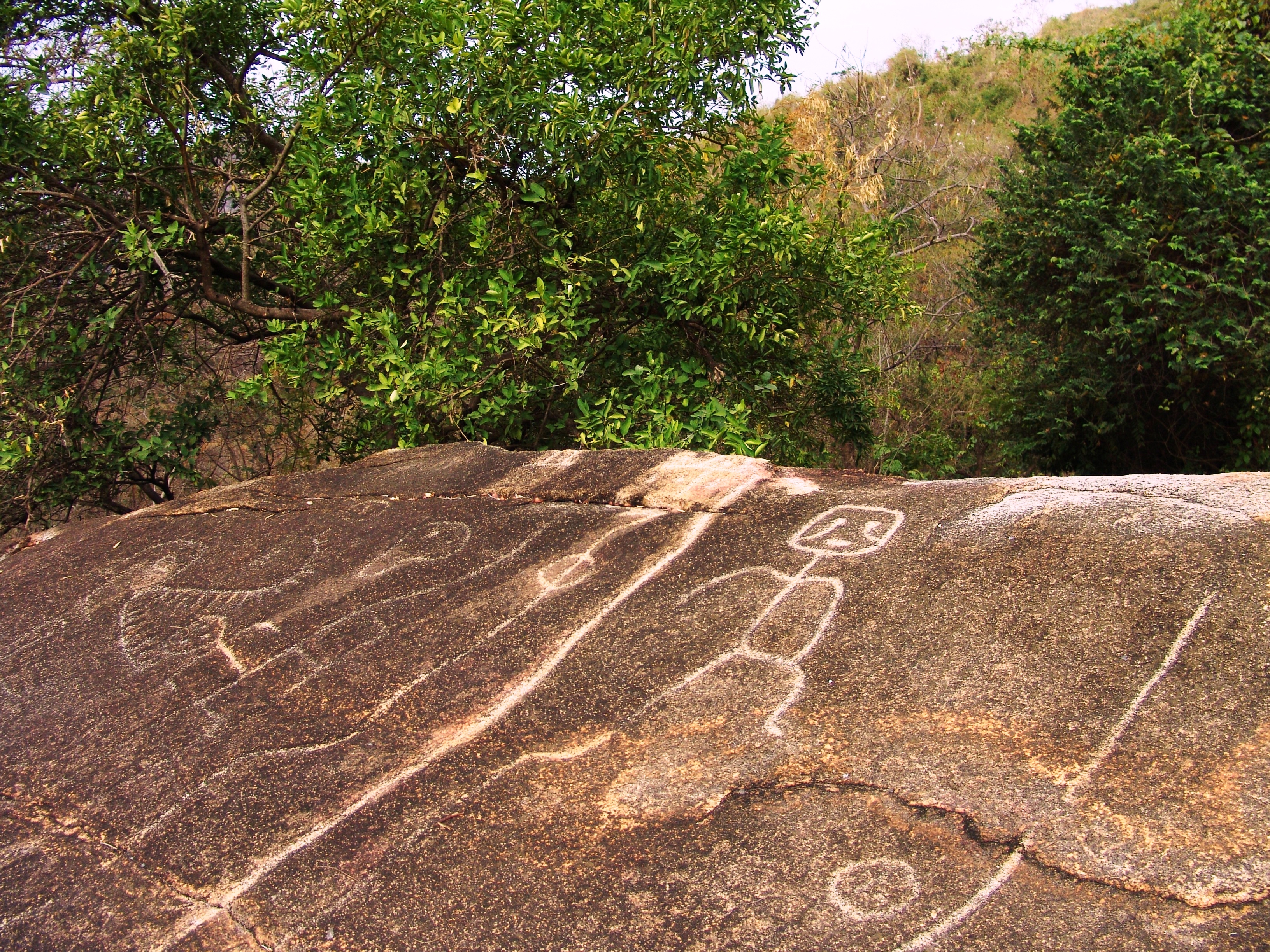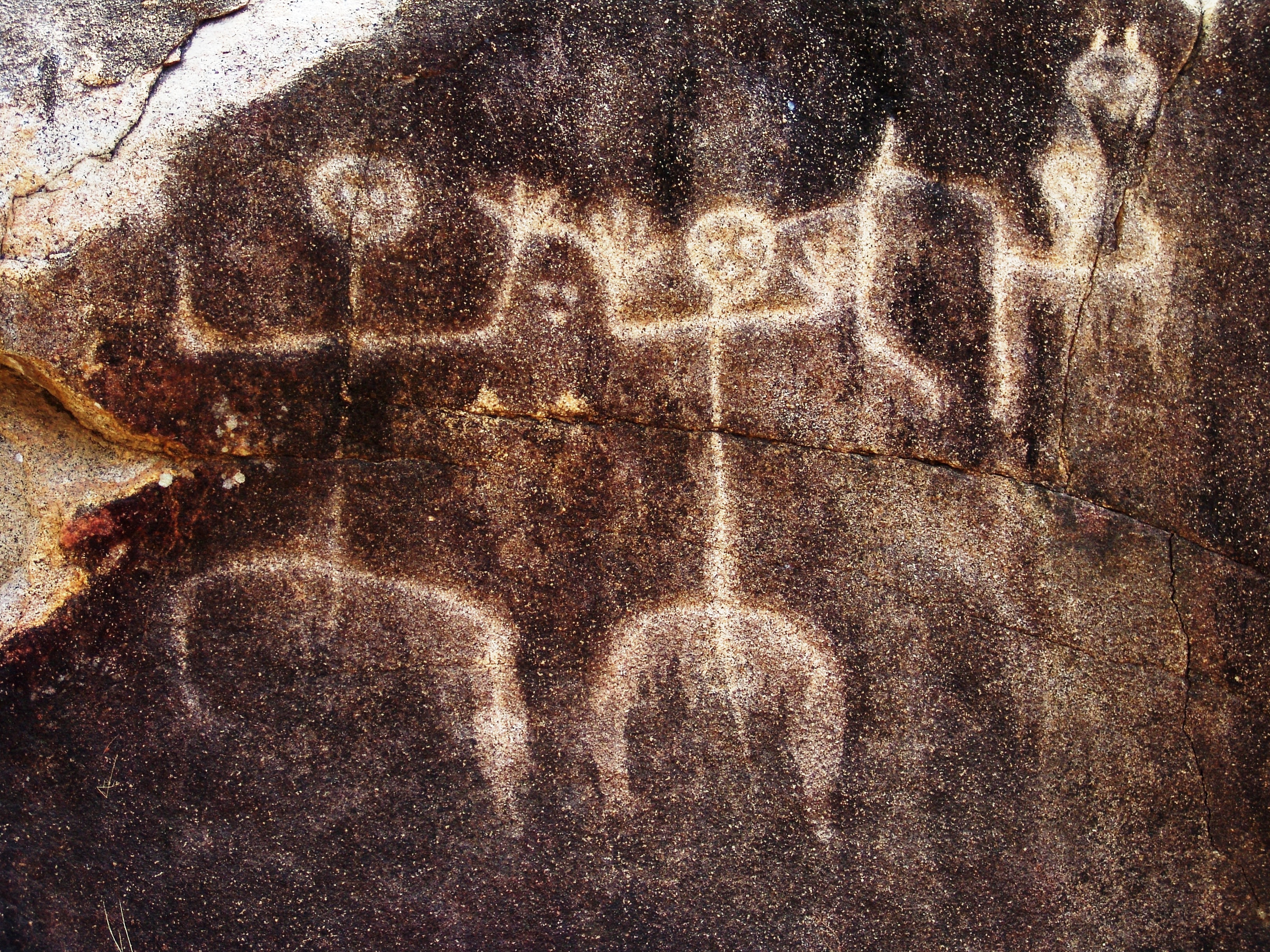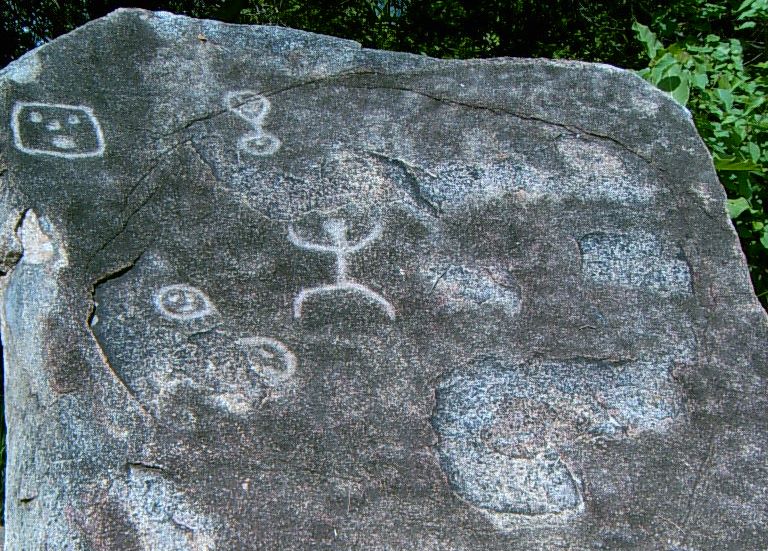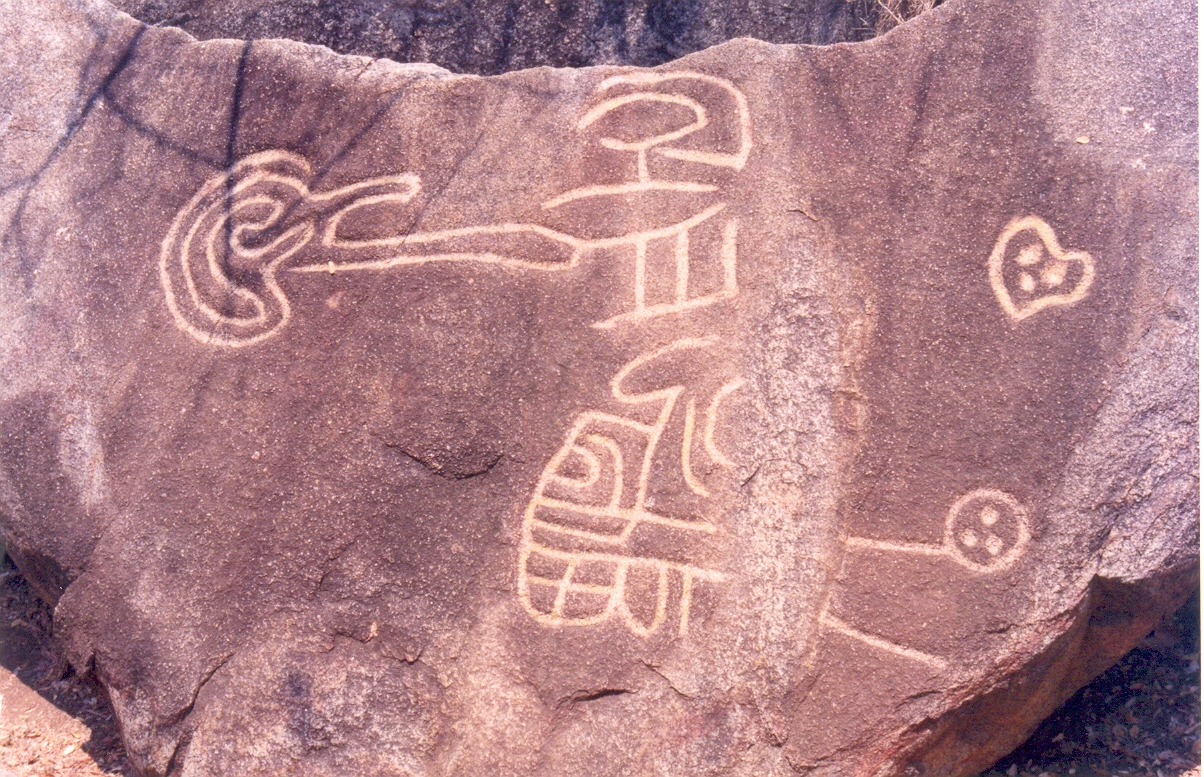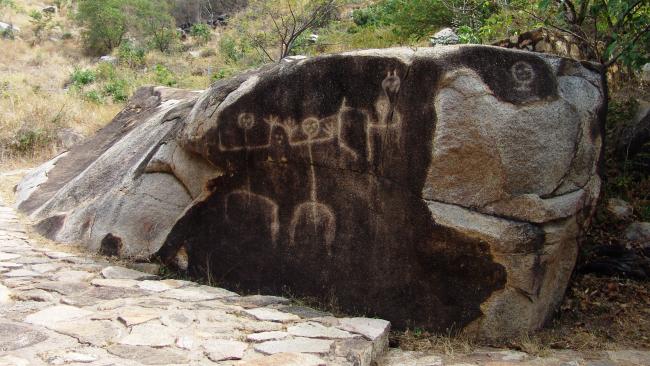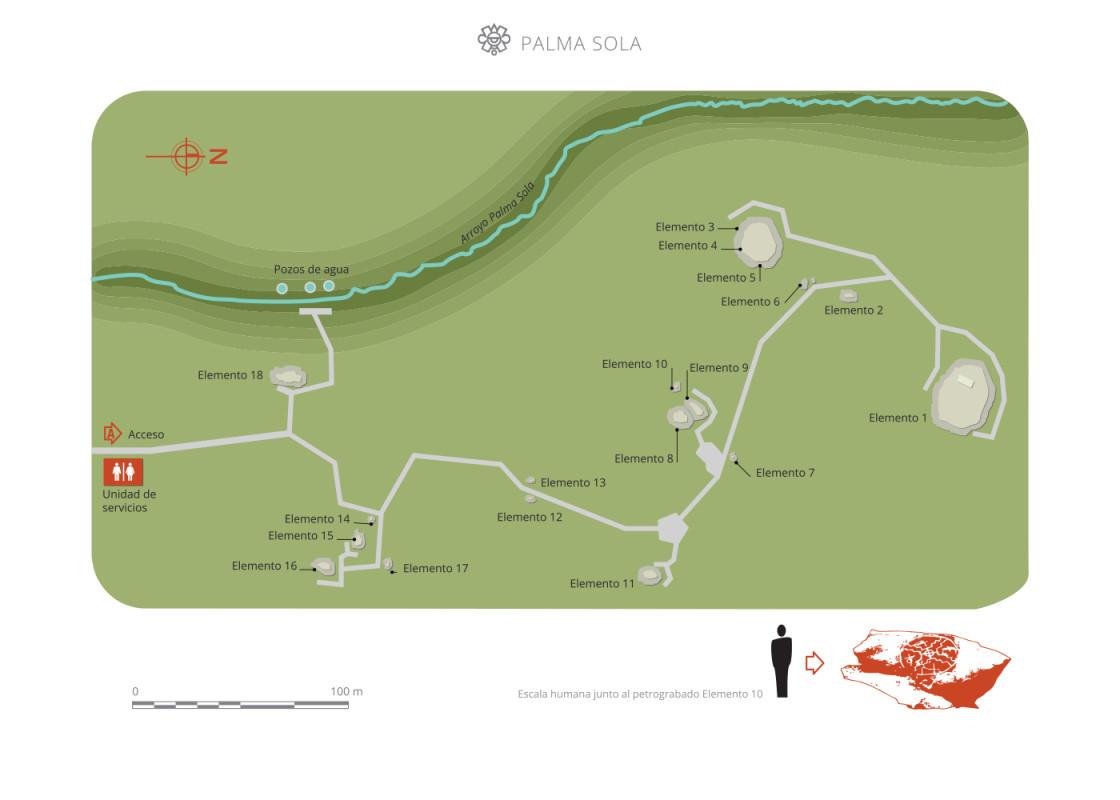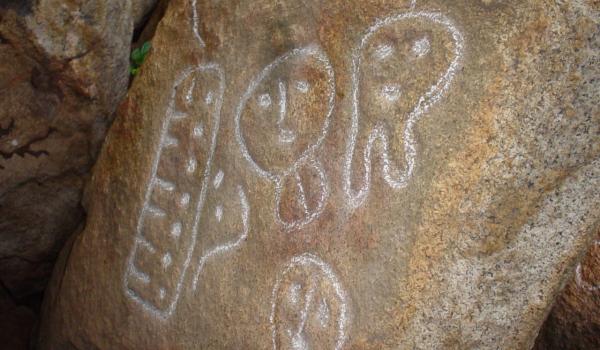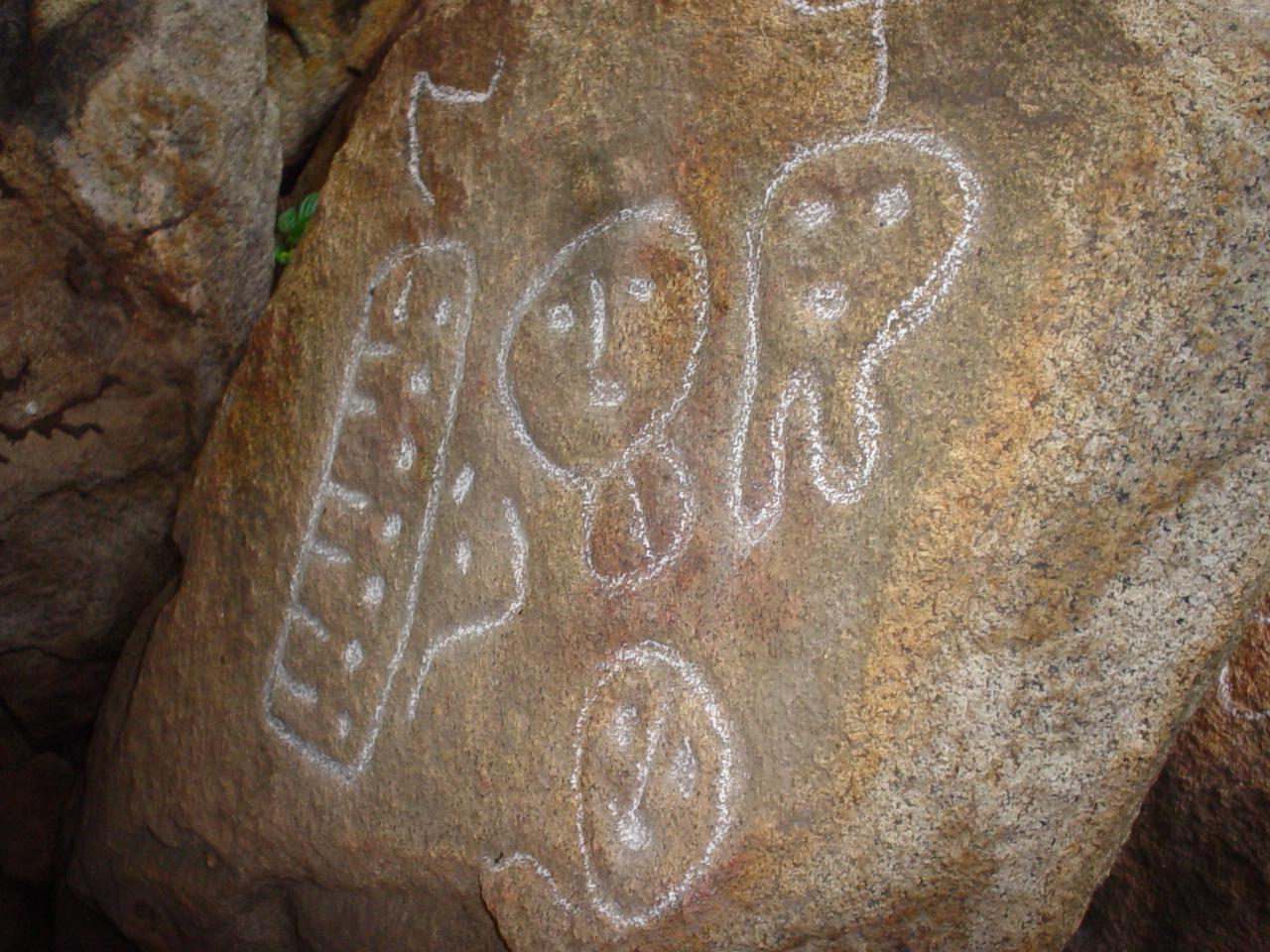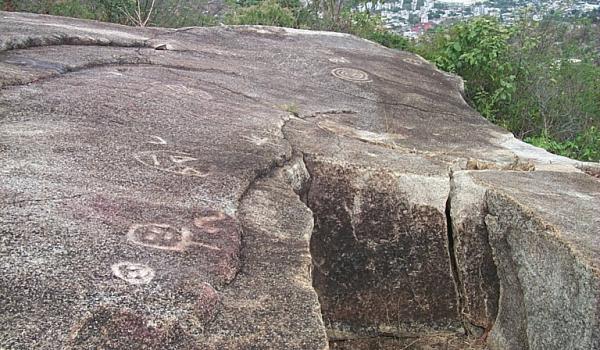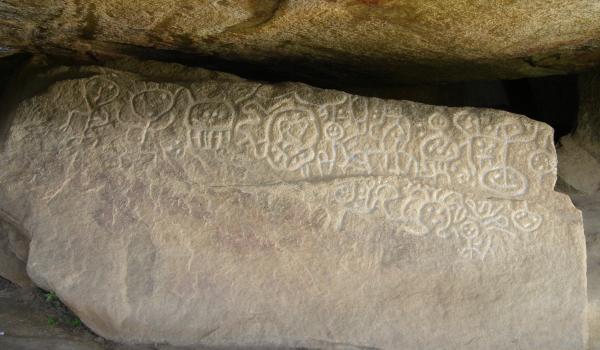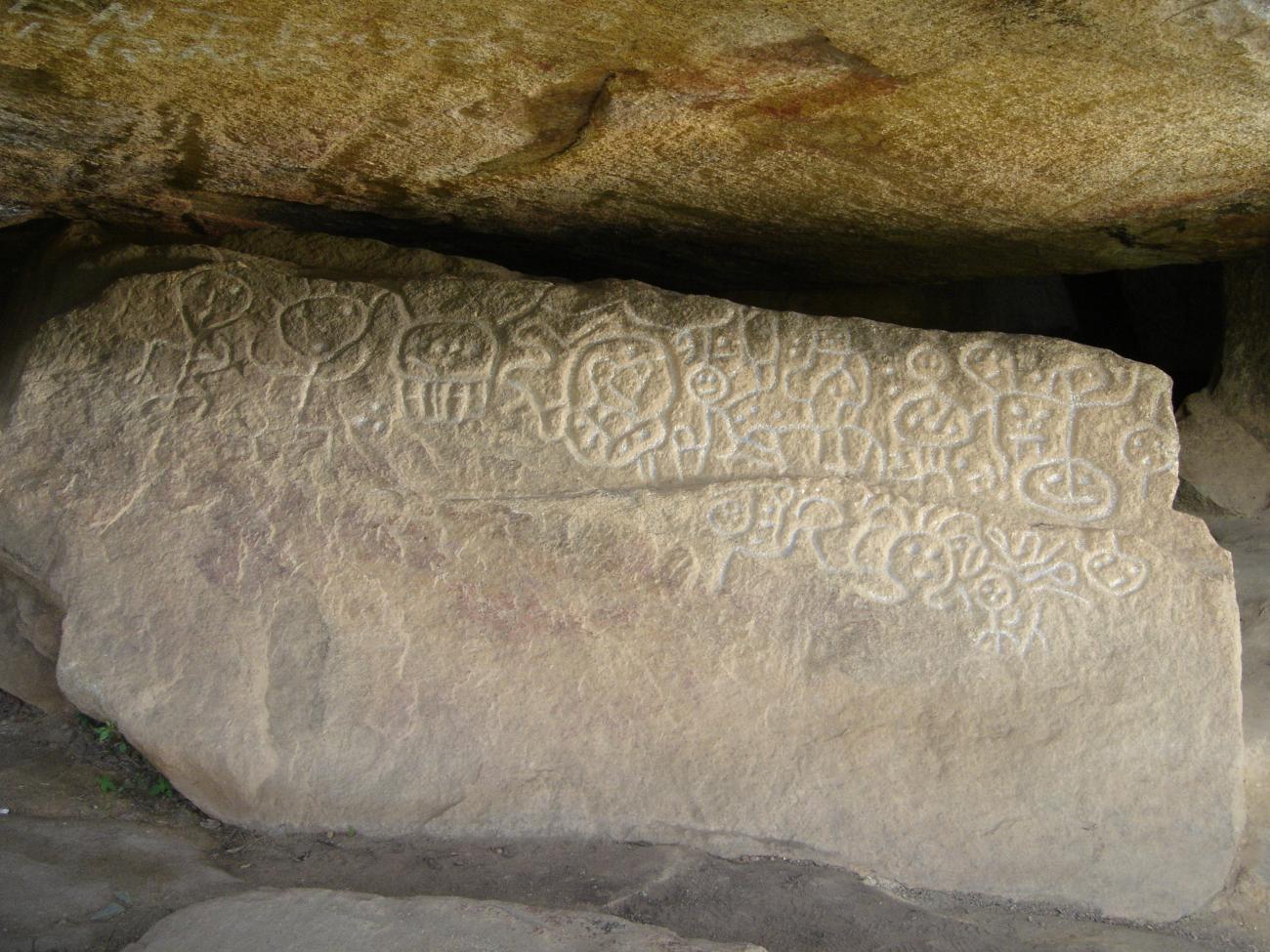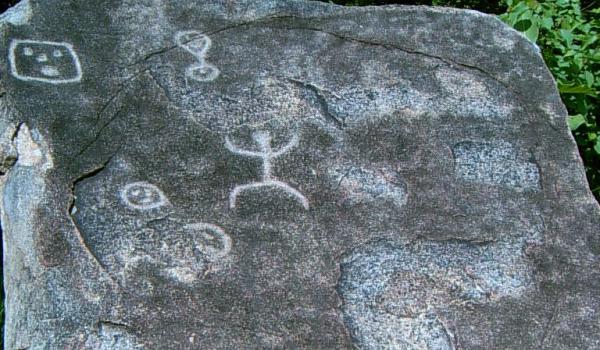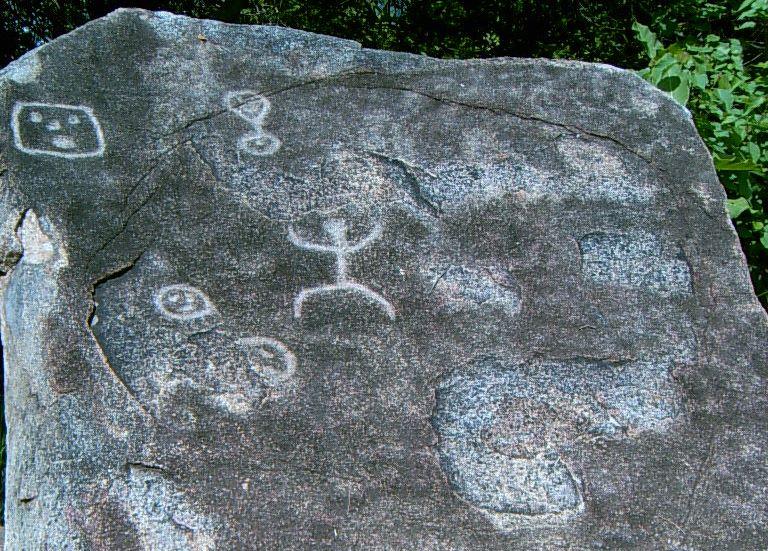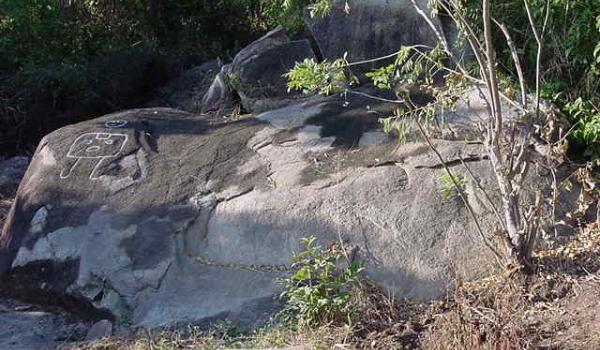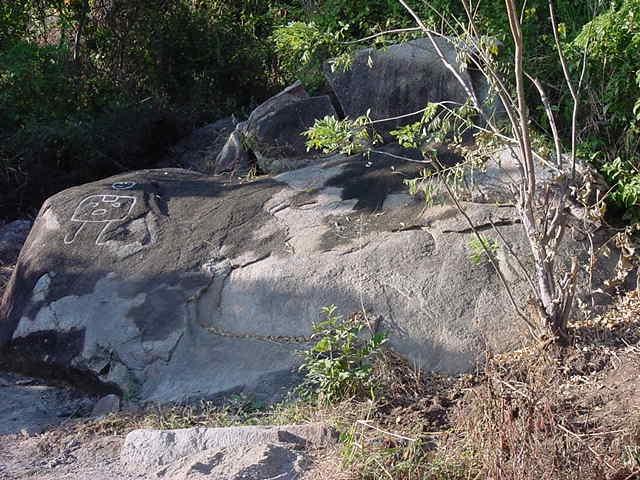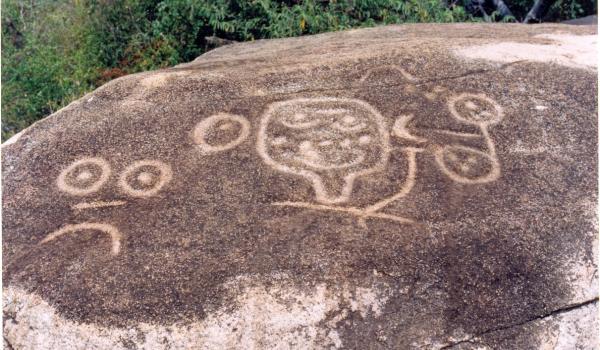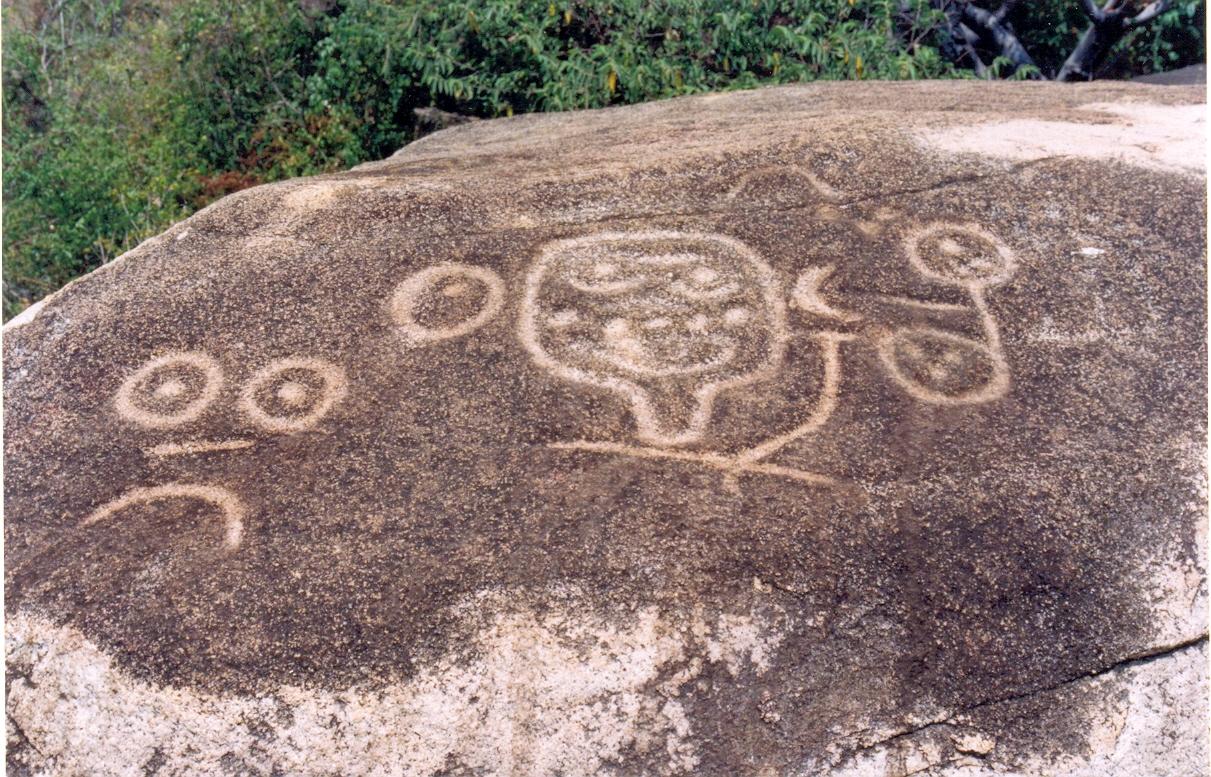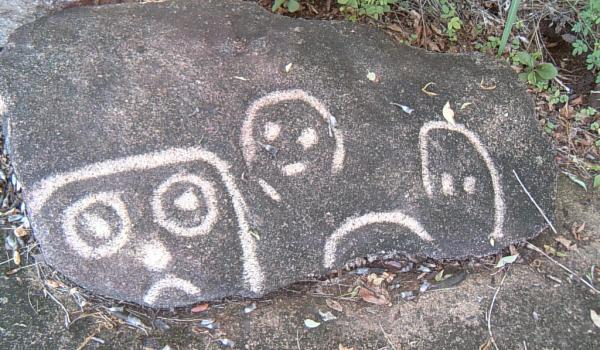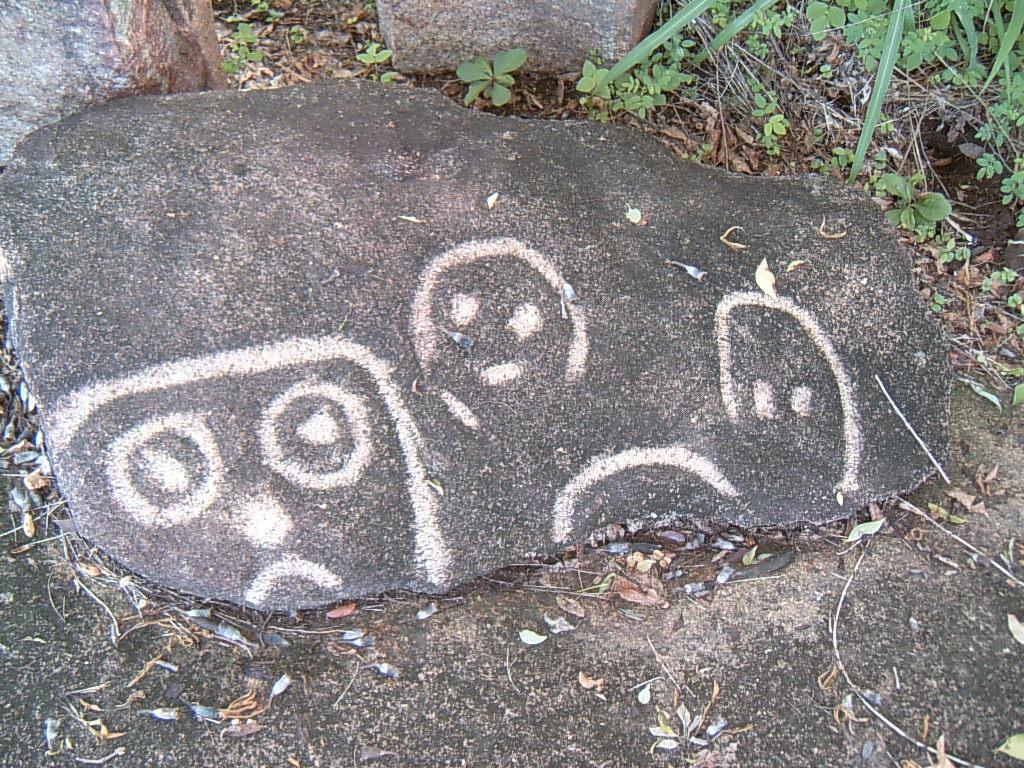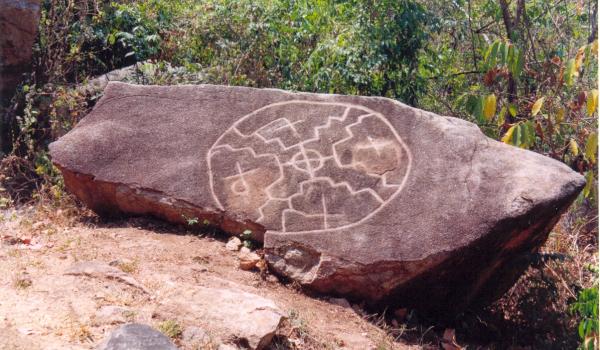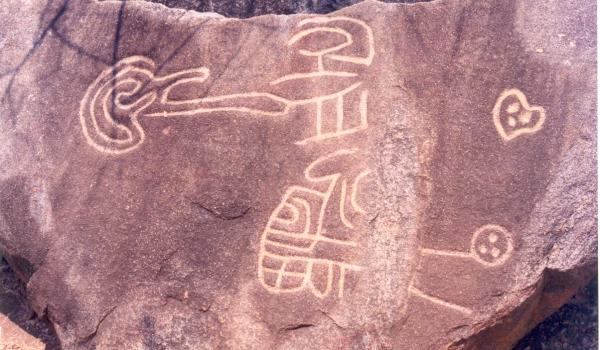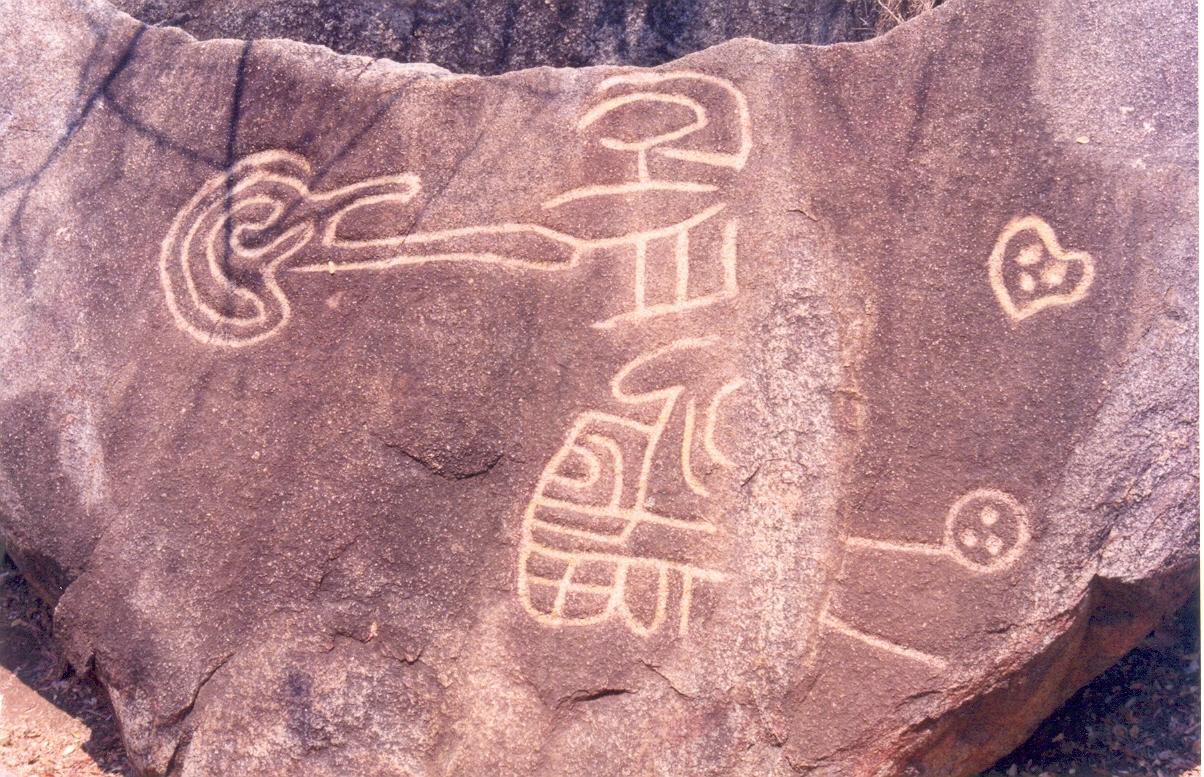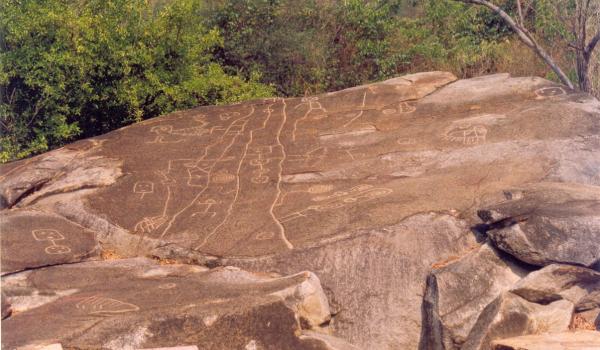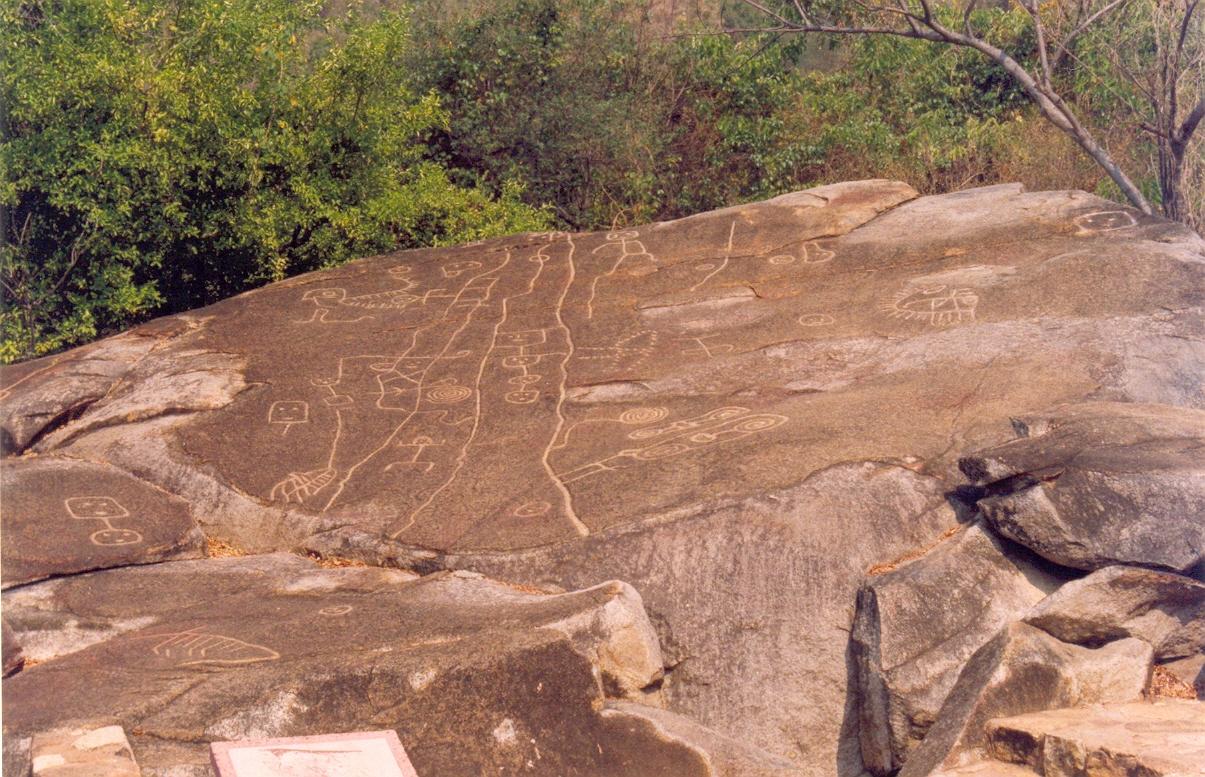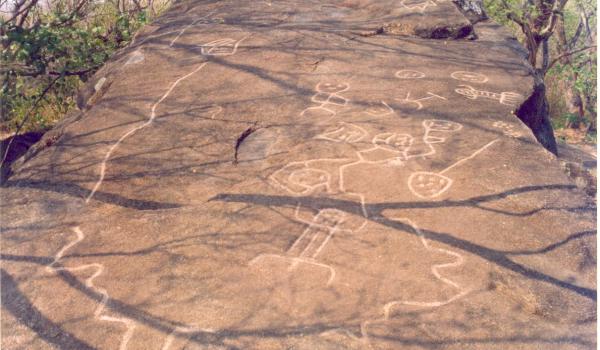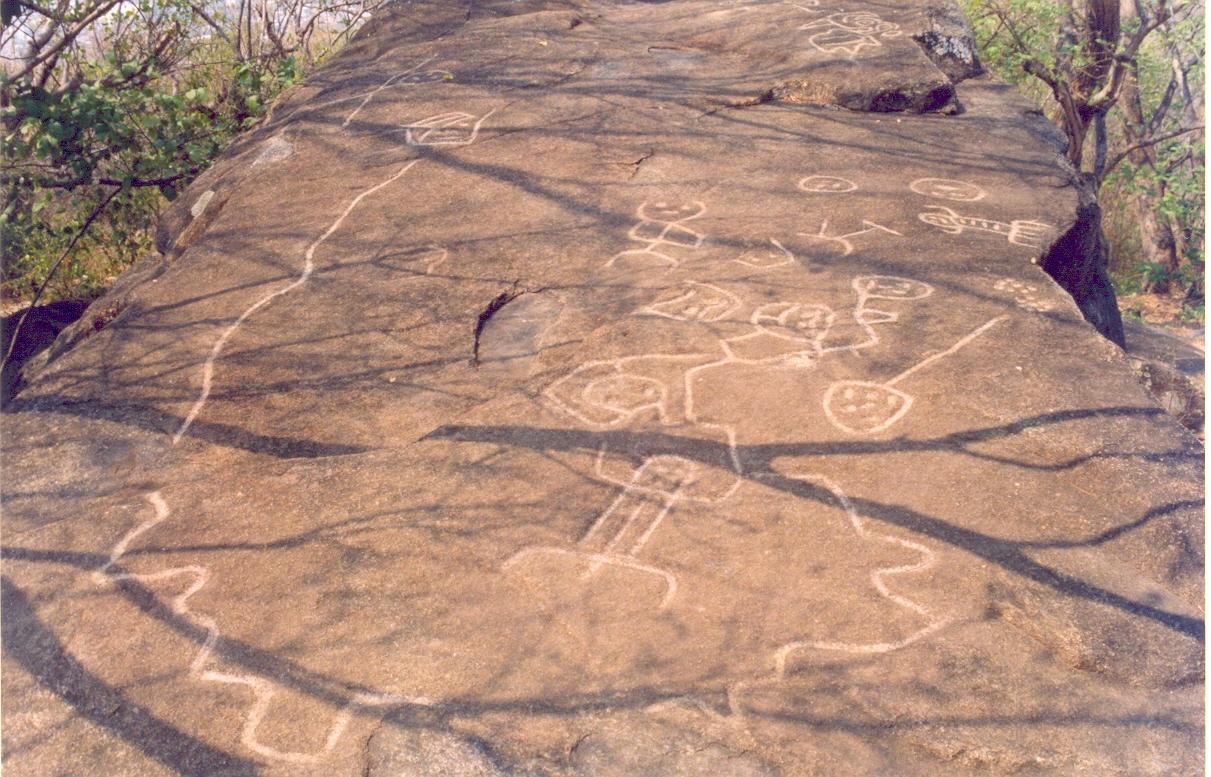Palma Sola covers an area of approximately 9 acres of the “amphitheater” on the upper part of the Cerro El Veladero. It was no accident that this particular spot was chosen for a ceremonial center. This is where two streams emerge and there is a rocky crag; it is also a spot which overlooks not only the lower slopes of the hill but also the bay. This is where the local people from Hornos, Caleta, Puerto Marqués, Zapotillo and Tambuco used to climb up to celebrate their religious festivals. The site was also used for astronomical readings in order to determine the rainy periods, the sowing season and the dry periods.
Even though it has not been possible to determine exactly the dates the site was occupied, some of the archeological features can be dated to the Middle Preclassic and the Epiclassic (800 BC- 750 AD).
The archeological site, covering about half a mile in length, includes nearly twenty rock carvings made with a chiseling technique. Generally these are schematic outlines of human figures (anthropomorphic), animals (zoomorphic) and geometrical motifs, together with what might be calendar records. Rock carvings 1, 10, 11 and 15 are especially important because of their complexity and interpretation.




